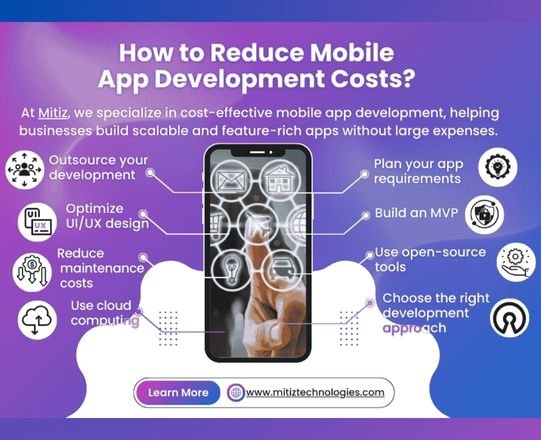
How to
Reduce Mobile App Development Costs?
Developing a
mobile app is a costly process. However, with the right strategies, you can
reduce expenses without compromising quality. Whether you're a startup or a
flourishing business, managing development costs can make a big difference in
your budget. In this blog, we’ll discuss a few ways to reduce mobile app
development costs.
1. Plan your app requirements: If you lack clear requirements, you’ll
definitely land up paying high development costs. Before you begin development,
do some research and find out the core features you want in your app, functionality,
target audience, platform (iOS, Android, or app’s functionality and user
journey. Defining the scope helps to avoid unnecessary changes and delays,
saving both time and money.
2. Build an MVP: Instead
of developing a fully-featured app, build a Minimum Viable Product (MVP)
first. An MVP includes the most important features you need to validate your
idea. This helps you to reduce initial development costs and test user feedback.
Once the MVP succeeds, you can add advanced features based on real data.
3. Choose
the right development approach: You
can either choose native development, cross-platform development, and
progressive web applications. Assess your needs carefully to choose the most
cost-efficient approach.
4. Use open-source tools: The best way is to use open-source
frameworks, APIs, and third-party integrations to speed up development and reduce
costs. For example, you can choose Firebase for backend and real-time database,
Stripe for payments, and Google Maps API for location services.
5. Outsource your development: Instead of hiring a full-time in-house
development team, try hiring freelancers or outsource to development agencies.
Always compare rates, check portfolios, and read reviews before choosing a
partner.
6. Optimize UI/UX design: A poor user experience can lead to
redesigns and even frustrate users. Therefore, it is important to optimize UI/UX
for improved navigation and usability and higher user retention.
7. Reduce maintenance costs: Follow clean coding standards, se
automated testing tools, and document code properly to reduce costs that may
arise due to messy codes.
8. Use cloud computing: Rather than investing in servers, choose cloud services
like AWS, Google Cloud, or Azure. Cloud computing offers multiple benefits such
as pay-as-you-go pricing, low operational costs, and high scalability based on
app demand.
Conclusion:
By following
strategies such as clear planning, MVP development, and outsourcing, you can
build a high-quality app at affordable costs. Keep efficiency in mind and
invest wisely to ensure long-term success. At Mitiz, we specialize in cost-effective mobile
app development, helping businesses build scalable and feature-rich apps
without large expenses.